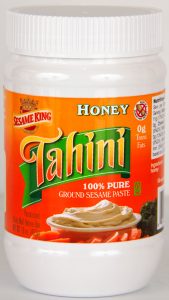After a few months of retreating and thinking about next steps for barfblog, and focusing on consumer food safety observations in our new kitchens, I’m getting back in the posting mix.
And still, one of my favorite emails (after the weekly MMWR notification) is FDA’s updated warning letters. There’s so much to be learned in these beyond the fun stuff like peeling the skin off of a bearded dragon (not a euphemism).
Here’s my favorite from today’s update, courtesy of Sunshine International Foods Inc – a tahini processor.
There are a few nuggets in this one but my big takeaway is that the letter provides a fantastic blueprint for all other tahini processors to follow if they want to meet what FDA expects. Including that you absolutely need to include Salmonella as a known or reasonably foreseeable hazard in a preventive control plan.
Oh and if you are a retailer or food service buyer, looking through these warning letter alerts are probably a good idea – I’d be making vendor decisions based on these (and asking my current suppliers how they are different from the folks who receive them).
Your hazard analysis did not identify a known or reasonably foreseeable hazard for each type of food manufactured, processed, packed, or held at your facility to determine whether there are any hazards requiring a preventive control, as required by 21 CFR 117.130(a)(1). The hazard evaluation must include an evaluation of environmental pathogens whenever a ready-to-eat (RTE) food is exposed to the environment, as required by 21 CFR 117.130(c)(1)(ii). Your RTE tahini products made from natural sesame seeds are exposed to the processing environment following pasteurization and prior to packaging, and your repackaged RTE tahini products are exposed to the processing environment throughout the processing of these products. Although you have identified “Microbial Growth Staphylococcus Aureus” as a potential significant food safety hazard in your hazard analyses for your RTE tahini products (including RTE tahini manufactured from natural sesame seeds with creation date 5-01-18, RTE flavored tahini manufactured from natural sesame seeds with creation date 5-01-18, repackaged RTE tahini with creation date 5-01-18, and RTE flavored tahini using raw tahini received at your facility with revision date 3-6-19), these hazard analyses do not identify contamination of RTE tahini with the environmental pathogen of Salmonella as a known or reasonably foreseeable hazard for each type of food manufactured, processed, packed, or held at your facility to determine whether it is a hazard requiring a preventive control.
Also, folks should do better on cleaning and sanitizing the hard to get spots where Salmonella or Listeria might be living.
1. All food-contact surfaces, including utensils and food-contact surfaces of equipment, must be cleaned as frequently as necessary to protect again contamination of food, as required by 21 CFR 117.35(d). However, our investigators observed the following conditions:
a. Hardened tahini was present around the gasket between a stainless-steel pipe feeding from the hold/pasteurizer tank to the hopper for the retail jar filler located in the Pasteurizer/Filling/Packing Room.
b. Soft tahini was observed around and beneath the lid seams to the retail line filler hopper in the Pasteurizer/Filling/Packing Room.
c. Soft and hardened tahini were observed inside the retail line filler hopper and (b)(4) filler heads.
d. Soft tahini was observed inside the square mixer and grinding/milling hopper in the Roasting/Milling Room.
e. Chocolate tahini was observed inside the stainless-steel pipe feeding into the (b)(4) in the Pasteurizer/Filling/Packing Room.
